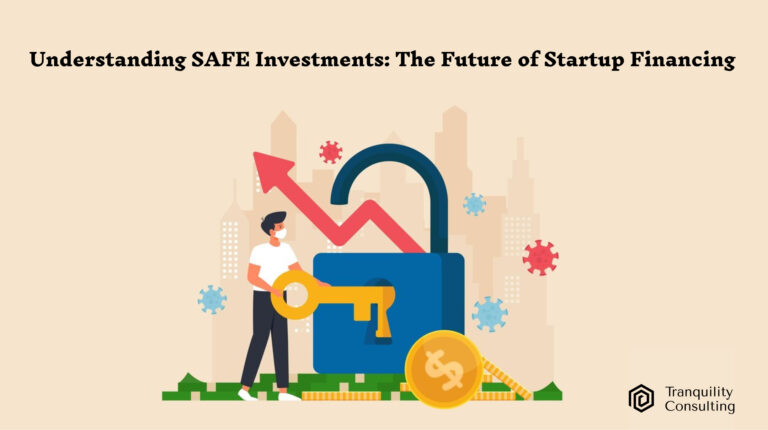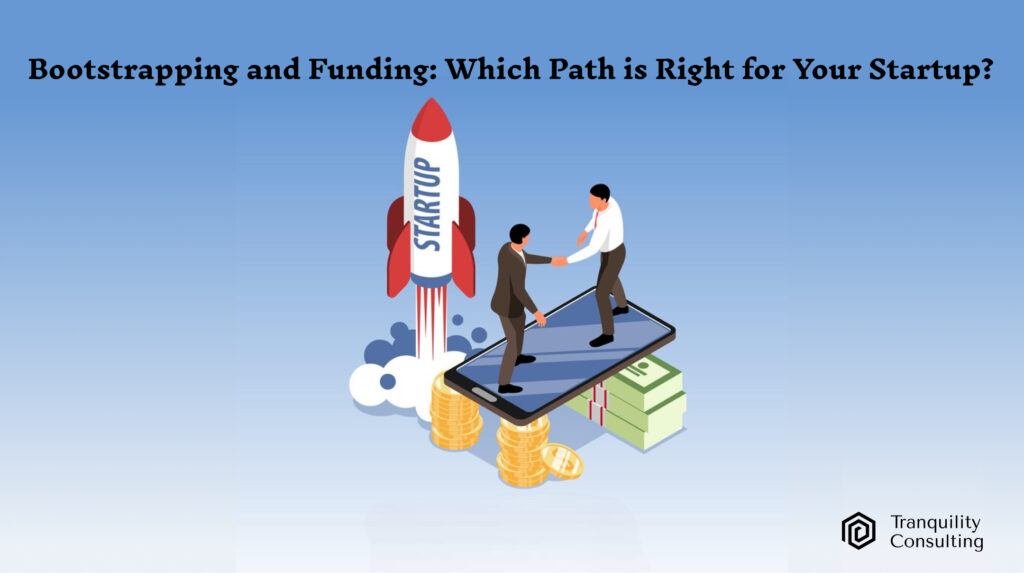In the dynamic world of Startup financing, new instruments are continually emerging to meet the needs of entrepreneurs and investors. One such tool is the SAFE investments (Simple Agreement for Future Equity), which has gained popularity due to its simplicity and flexibility. SAFE notes provide a streamlined way for early-stage companies to raise capital without complexities in traditional equity or debt financing.
This blog will explore what SAFE investments are, how they are treated in business, and how they are converted into equity. Additionally, we’ll cover why SAFE notes have become a favoured choice for many startup and investors alike.
What is a SAFE Investment?
A SAFE (Simple Agreement for Future Equity) is a financing contract that startups use to raise capital from investors in exchange for future equity. Unlike traditional debt, SAFE investments do not come with an obligation to repay principal or interest. Instead, the investor receives the right to acquire equity in the company later, typically when the company conducts a future equity financing round or undergoes a liquidity event such as an acquisition or IPO.
Introduced by Y Combinator in 2013, SAFE notes offer a simpler alternative to convertible notes. They eliminate the need to negotiate interest rates and maturity dates, providing a more efficient fundraising process. By deferring the valuation of the company to a future date, SAFE notes allow startups to avoid the challenges of early-stage valuation when the company’s worth is highly speculative.
How is a SAFE Investment Treated in Business?
From an accounting and business perspective, SAFE investments are typically treated as equity-like instruments. However, because SAFE notes are actual equity once converted, they remain off the company’s capitalization table until a conversion event occurs.
Here’s how businesses typically manage and account for SAFE notes:
- No Immediate Dilution: SAFE notes do not immediately dilute existing shareholders. The dilution occurs only when the notes convert into equity, usually during the next round of funding.
- Liability Treatment: SAFE notes are not recorded as debt on the balance sheet. Instead, they are considered a contingent liability, representing a potential future obligation (the issuance of shares) rather than a direct debt.
- Deferred Valuation: A key advantage of SAFE notes is the ability to postpone the company’s valuation until a future round of equity financing. This can be beneficial for early-stage companies with uncertain or rapidly changing valuations.
- Investors’ Rights: While SAFE investors do not have immediate ownership rights, they may negotiate specific provisions such as valuation caps or discount rates that determine how their investment will convert into equity at the time of the next financing round. The valuation cap sets a maximum price at which the SAFE note will convert, ensuring investors receive favorable equity terms if the company’s valuation rises significantly.
How are SAFE Notes Converted into Equity?
The conversion of a SAFE investment into equity typically occurs when the company raises additional financing through a priced equity round. Here’s an overview of the process:
- Trigger Event: The most common trigger event for conversion is the company raising a qualifying equity financing round. This usually happens when the company sells preferred stock to new investors.
- Conversion Terms: Depending on the terms of the SAFE note, the conversion may include a discount or be subject to a valuation cap. The discount is typically 10-30%, allowing SAFE investors to purchase shares at a reduced price compared to new investors. The valuation cap ensures that if the company’s valuation exceeds a predetermined amount, the SAFE investors still receive shares as if the valuation were lower, thus protecting their investment.
- Issuance of Equity: Once the trigger event occurs, the SAFE note is automatically converted into preferred shares (or common shares, depending on the terms). At this point, the SAFE investor becomes an equity holder with rights and privileges in the company, such as voting rights and access to dividends.
- Non-Conversion Scenarios: In the rare case that a company is acquired or undergoes an IPO before a qualifying financing round, the SAFE notes may convert into ordinary shares or pay out an amount equivalent to the agreed-upon terms, such as a valuation cap.
Benefits of SAFE Investments
For both startups and investors, SAFE notes provide several key advantages:
- Speed and Simplicity: One of the most significant benefits of SAFE notes is the agreement’s simplicity. Because they avoid the complexities of debt (no interest or maturity dates), they can be drafted and executed much faster than other financing instruments. This allows startups to raise capital quickly when needed.
- No Immediate Valuation: SAFE notes are ideal for early-stage companies that may still need a precise valuation. Deferring the valuation to a future round reduces negotiation time and allows both the investor and the startup to assess the company’s worth later when it has more traction.
- Investor Flexibility: SAFE notes offer flexibility to investors. They allow investors to convert their investment into equity later, often at favorable terms, while providing them with a foot in the door at the early stages of a promising company.
- No Interest Payments: Unlike convertible debt, SAFE notes do not accrue interest, making them more attractive to startups that may not want the financial burden of regular interest payments.
- Future Equity: SAFE notes give investors the advantage of acquiring future equity at a lower cost if the startup grows and increases its valuation over time. This makes SAFE notes an attractive option for early-stage investors.
In accounting, treating SAFE investments presents a challenge because they occupy a gray area between debt and equity. While SAFE notes are structured to eventually convert into equity, they do not provide investors with immediate ownership, nor do they create an obligation for repayment like debt. As a result, the question arises whether to record them as liabilities or equity on the balance sheet.
Many businesses choose to classify SAFE notes as contingent liabilities until a conversion event occurs, treating them as potential future obligations rather than direct debt. However, some accounting teams argue that since the intent is for the SAFE to convert into equity, it should be listed under the equity section. This lack of clear guidance can lead to discrepancies in financial reporting. For startups, it’s essential to consult with accountants or auditors to determine the most appropriate classification based on the company’s specific circumstances and regulatory environment.
Conclusion:
Due to their simplicity, speed, and flexibility, SAFE notes have become a cornerstone of early-stage financing for startups. Both startups and investors can benefit from the streamlined process of raising capital through SAFE investments without the complexities of debt or traditional equity agreements. As the startup ecosystem grows, SAFE notes will likely remain a popular early-stage funding option. They offer a straightforward path for entrepreneurs to secure investment while allowing investors to convert their funds into equity when suitable.
FAQs
- What is a SAFE investment?
- A SAFE investment is a financing tool that allows startups to raise capital in exchange for future equity without creating debt obligations.
- How does a SAFE investment differ from convertible notes?
- Unlike convertible notes, SAFE notes do not accrue interest or have a maturity date, making them more flexible for startups.
- When does a SAFE investment convert to equity?
- SAFE notes convert into equity during a qualifying financing round or a liquidity event such as an acquisition or IPO.
- What are the benefits of SAFE notes for startups?
- SAFE notes offer startups quick access to capital without the complexities of debt or immediate dilution of ownership.
- How are SAFE investments treated in business accounting?
- SAFE notes are considered contingent liabilities and do not immediately impact the company’s balance sheet or equity structure.
If you have any questions or need business-related tax consulting advice, please contact us at: [email protected]





